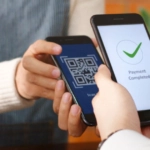HomeResourcesAccount PayableAccount Payable
Making Payments to Remote Workers, Worldwide
As remote work becomes more common, Payoneer offers flexible payment solutions for salaried, hourly, or contract payments. Learn how it can help solve operational challenges and leverage your workforce.

As more and more companies are discovering, relying on remote workers can be a smart way to build a company.
That’s especially true in businesses where knowledge and skill and drive are the key assets — where being nimble, and efficient, and really smart, can be your competitive edge. And having a reputation for paying quickly and fairly can help you build credibility and trust in the marketplace.
When your talent pool isn’t limited only to people who live within an easy commute of your home office, you can tap the brains of brilliant people wherever they happen to live. Even across time zones, borders, and continents.
You can leverage a workforce that includes direct employees — who may or may not work on site — as well as independent contractors, outsourcers, consultants, and freelancers in various proportions, depending on your workflow and talent needs at any given moment.
You can be far more flexible than the company that requires everyone to come and sit in the same office space every day.
The flip side of course, is that companies that go virtual — either entirely or partly — have to solve some unique operational problems.
Managing and collaborating from afar
How do your teams collaborate across time zones and oceans? How do you coordinate and manage workflow? How do you hold ‘meetings’. How do you track work time, deliverables, and performance of teams that include staff, freelancers and contractors all at that same time? That’s where platforms like Skype, Slack, Hubstaff, Basecamp and many others come in.
But there is also the fundamental question: How, exactly do you pay your remote workers — who may or may not be actual employees, and who may live across town, across the country, or two continents away? And who live on different currencies?
The fact is, there are a number of ways to send funds to remote employees or contractors. That’s relatively easy.
Paying a worldwide workforce
The hard part is finding a payment method that works for dozens of remote workers of all types, and can easily expand to more and more remote workers in the future. What scales? What automates best?
For example, for conventional employees in your home country, traditional paychecks or direct deposits may work fine, even if they live far away from your home office. The same for contractors or freelancers in country. Payroll and A/P systems can automate the issuing of checks for you.
But what about employees or contractors outside the country?
You can arrange for international wire transfers to their home bank accounts. The problem is, you will have to execute each transfer manually, which can take up to 15 minutes each. And the funds can take days to reach the target accounts. (Assuming there is no glitch in processing.) And you have to maintain the banking information and details for each payee. When they change banks, you need to update your records.
If you have three remote workers, such a process may be workable. But if you need to pay dozens of contractors and employees, wire transfers quickly become unmanageable.
Worse yet, the costs of international wire transfers can be prohibitive. Depending on the particular banking relationships, both you and your recipients can end up paying painful fees on the amounts transferred. If you have dozens of payees worldwide, the costs can mount up quickly — costing you money and the goodwill of your employees and contractors.
The non-bank solution
That’s why, for more and more companies, the smarter solution is an international payment platform like Payoneer.
As a mass-payout solution, Payoneer can automate payments to virtually any number of employees, contractors, freelancers and vendors each month — whether they live in your home country or abroad. There are no checks or international wire transfers involved.
You simply have your employees, contractors, and freelancers establish accounts with Payoneer. It takes a few minutes online, and is usually confirmed the same day.
When payments are made to your employees or freelancers’ Payoneer accounts, the funds can be quickly transferred to local bank accounts, or accessed via ATMs worldwide. A few of the accounts that are opened are for you when you open a Payoneer account are: A UK, EU and a US bank account.
You, as the payer, don’t have to worry about bank account numbers or international details at all. Everything works through basic Payoneer account numbers. Your HR or payroll system can generate the necessary payment orders automatically. Payoneer works seamlessly with salaried payments, hourly wages, or invoiced and contract payments.
In addition, the built-in tax capabilities of Payoneer can automatically solicit and collect the necessary tax forms from payees, depending on the country involved.
Related resources
Latest articles
-
Kazakhstan payment landscape: The best ways to send and receive money internationally
The right payment solution for your business saves both time and money. In this infographic, we explore the major players in Kazakhstan’s payment ecosystem for international transfers.
-
Defying the odds: How Ukrainian businesses thrive during war
One year post-war, Ukraine’s businesses adapt and thrive amidst adversity. Entrepreneurs showcase resilience, reflecting national tenacity. Many diversify, venturing into e-commerce and digital realms. Despite hurdles, 44% of SMBs aim for growth, with 36% hiring. Their grit underscores Ukraine’s enduring spirit amid challenges.
-
How to Pay International Freelancers?
Interested in working with freelancers, worldwide? Making international payments to freelancers and independent contractors around the world doesn’t have to be a headache with Payoneer. Learn how to use Payoneer to pay overseas freelancers while saving on international transaction fees and without jumping through hoops.
-
What Are The Best Payment Options For Freelancers?
Freelancers offer flexibility and expertise without the overhead of traditional employees. However, processing invoices and payments for international freelancers can be a complex and time-consuming process. To work with freelancers effectively, it’s crucial to understand the available payment options for freelancers and how to best keep on top of accounting and invoicing.
-
An 8-point Checklist for Finding the Best Payment Provider
There’s huge potential to expand into ASEAN markets. But only for online sellers that accept local payment methods. Finding a trusted payment solution can be a worry and a challenge. Use this checklist to vet potential payment partners. With the right payment support, the sky’s the limit!
-
How to bill your international clients
Want to learn how to bill international clients when you’re based in the Philippines? In this article we spoke to three leading business owners who shared their tips to working successful international work. Learn how they collect payments and more below.














